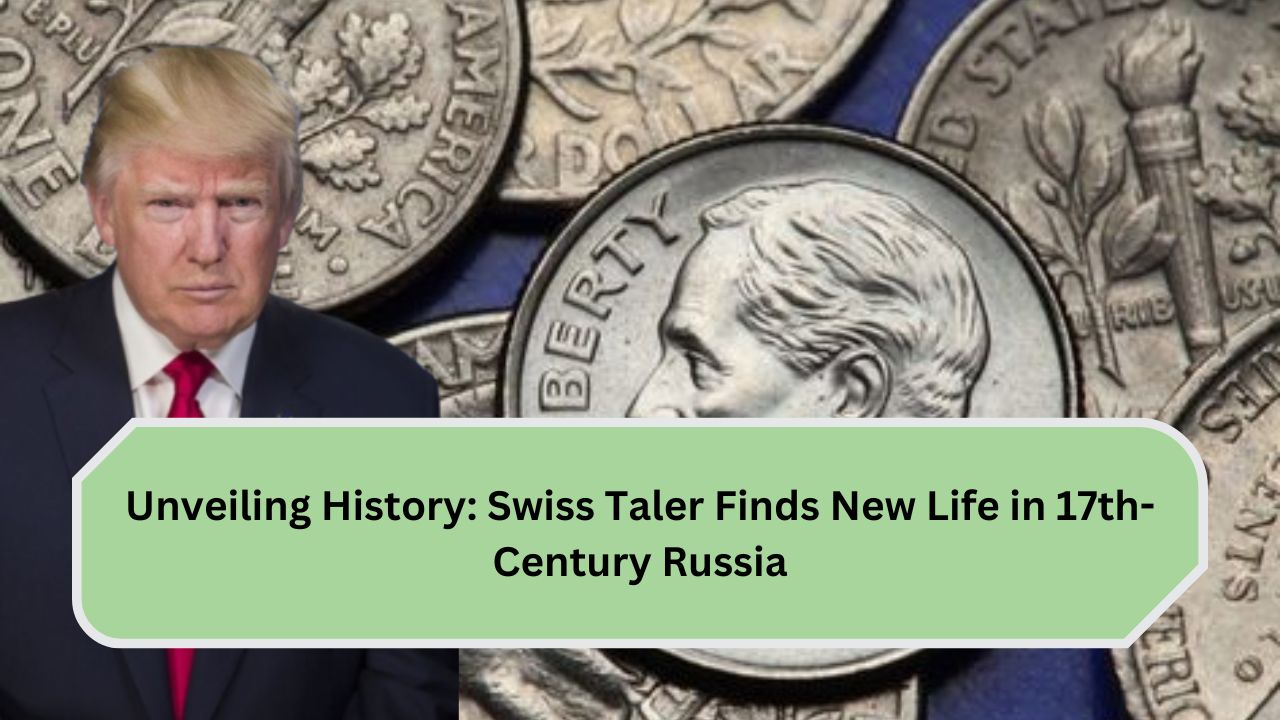Coins tell stories of economies, trade, and culture. One such story revolves around a rare silver taler from the Swiss canton of Schaffhausen, countermarked in 1655 for use in Russia during the reign of Czar Alexei Mikhailovich. This unique artifact, steeped in history, is a key highlight in the Konrad Burki collection of Swiss Cantonal coins. Offered at SINCONA AG’s Auction No. 91 in Zurich, this taler holds immense historical and numismatic value.
| Feature | Details |
|---|---|
| Coin Origin | Swiss canton of Schaffhausen |
| Year Minted | 1621 |
| Countermark Year | 1655 |
| Countermark Design | St. George on horseback fighting the dragon, year 1655 |
| Weight | 28.67 grams |
| Condition | Very Fine, fine dark patina |
| Category | Spassky-1487 |
| Rarity | High rarity, only 16-20 Swiss coins survive with countermarks |
| Previous Auction | Hess-Divo Auction No. 300, October 2004 |
| Opening Bid | 4,000 Swiss francs ($4,362 USD) |
| Historical Significance | Coin countermarked to meet Russian monetary standards during the reign of Czar Alexei Mikhailovich |
| Total Surviving Countermarked Coins | Approx. 1,500 |
What Makes the 1621 Swiss Taler Special?
The 1621 taler stands out for its connection to two nations—Switzerland and Russia. While minted in Switzerland, it was countermarked in 1655 to meet Russian monetary standards. This transformation marked its integration into Russia’s economy during a pivotal period in European history.
A Rare Coin
Of the 800,000 European talers countermarked under Czar Alexei’s reign, only about 1,500 survive today. Among them, just 16 to 20 were originally Swiss coins, with most originating from St. Gallen. The Schaffhausen taler is thus exceptionally rare, making it a coveted piece for collectors.
The Countermark: A Glimpse into 17th-Century Russia
The countermarks on this taler depict:
- St. George on horseback fighting a dragon – a significant motif in Russian history.
- The year 1655 – marking the time of its countermarking.
This process aligned the coin with Russian monetary standards, illustrating the interconnectedness of European economies.
Historical Context
The countermarking of foreign talers was a practice born out of necessity. In the mid-17th century, Russia lacked sufficient domestic coin production and turned to foreign coins to supplement its currency supply. By stamping these coins, the Russian government ensured they were trustworthy for trade and everyday use.
The practice was short-lived, ceasing by early 1656, but it left behind a legacy of rare coins that reveal much about the economic challenges and solutions of the era.
The Coin’s Journey and Condition
Past Ownership
This specific taler was previously part of another prominent collection, appearing in Hess-Divo’s Auction No. 300 in October 2004.
Current Condition
The coin is categorized as Spassky-1487, weighs 28.67 grams, and boasts a fine, dark patina. Its Very Fine condition underscores its well-preserved state, despite being over 400 years old.
Value and Auction Details
The Schaffhausen taler is listed as a “high rarity” piece, and its opening bid is set at 4,000 Swiss francs ($4,362 U.S.). This valuation reflects its historical significance, rarity, and excellent condition.
The Legacy of Swiss Talers in Russian History
Swiss talers like this one not only served as currency but also acted as cultural bridges. Their circulation in Russia highlights Switzerland’s minting excellence and Russia’s adaptive economic strategies.
Conclusion
The 1621 Swiss taler, countermarked for Russian use, is more than a coin—it’s a window into a bygone era of trade and adaptation. Its rarity and historical significance make it a prized artifact for collectors and historians alike.
FAQs
1. What is a countermarked coin?
A countermarked coin is one that has been stamped or marked with an additional symbol or design by a government or authority. In this case, the Swiss taler was countermarked by Russia in 1655 to conform to their currency standards.
2. Why was this coin countermarked in 1655?
During the 17th century, Russia did not have enough of its own coinage and thus used foreign coins. The countermarking process was done to make sure that the Swiss taler was accepted in Russia’s economy, ensuring it could be used in trade.
3. How rare is this 1621 Swiss taler?
This taler is extremely rare. Of the 800,000 European talers that were countermarked, only about 1,500 are still around today, and only 16 to 20 were originally minted in Switzerland, making this coin one of a handful of surviving pieces.
4. What does the countermark on the coin depict?
The countermark on the coin features St. George on horseback, fighting a dragon. It also includes the year 1655, marking the time when the coin was countermarked for Russian use.
5. How much is the coin worth today?
The coin has an opening bid of 4,000 Swiss francs (approximately $4,362 USD) in the SINCONA AG auction. Its value comes from its rarity, historical significance, and excellent condition.

